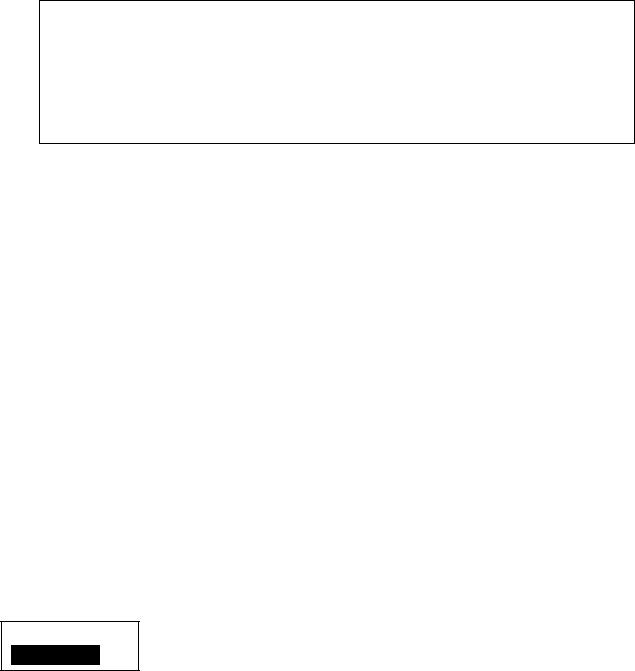
10107
.pdf
80
2. Look at the phrases below used to offer opinions, agreeing and disagreeing.
Write them in the correct columns.
I think … Yes, but … It seems to me … In my opinion … I agree. It’s good but … I totally agree. I am not really sure. I feel …
That’s true. I don’t think so. Yes that’s right. I don’t agree with that. Exactly! You’re right. Yes I see what you are saying but …
giving your opinion |
agreeing |
disagreeing |
|
|
|
|
|
|
3. Work in pairs. Discuss the statements in your tables giving different opin-
ions. Use the phrases in ex. 2 to help you.
Activity 6
Multitasking
In today’s digital world, people have more and more things competing for their attention. With access to so much entertainment and information, we often divide our focus between more than one task – whether it’s checking social media while working or studying or watching TV and talking on the phone at once.
81
1.Multitasking is often associated with productivity and it is believed that it can
improve performance. Do you agree?
Art Markman, cognitive psychologist, explains that multitasking is more like a time-
sharing activity: “Your brain can only actively think about one task at a time, so you focus on one task, then another takes its place. The shift is so fast you don’t even notice that you’re only doing one thing at a time. You feel like multitasking, but what you are actually doing is time-sharing.”
Multitasking in education
2.Do you often multitask while studying? Do you think it can have a negative impact on your learning? Why/Why not?
3.Now read the text about negative effects of multitasking and compare with your ideas.
Why Multitasking Is Bad For Students
Multitasking can have a number of negative effects on learning.
Since students aren’t giving their full attention to their studying, they aren’t as effective at absorbing the information. And without a solid comprehension of what students are learning, grades can start to get worse.
The negative effects of multitasking on students can also include:
∙A weaker grasp on the information being learned
∙Poor retention of the material students have studied
∙Higher levels of stress and frustration
∙Brain drain from doing too many tasks at once
∙Distractions leading to more time required to complete each task
4.What advice would you give on how to avoid the negative effects described
above?

82
5.Now read the list of tips on how to avoid multitasking and match the headings
to the paragraphs.
Don’t study in front of the television Put away anything that isn’t needed Stick to a study schedule Turn off the cell phone Work in a quiet space Block distracting websites
How Students Can Avoid Multitasking
Here are 6 tips to break the multitasking habit:
…..............
Remove the distractions of social media and texts so you can focus on the task at hand. Power down your cell phone or leave it in another room until you’ve done with the homework assignment.
…..............
Pick one task or assignment to work on and put away any books or materials that aren’t needed. This will help keep your attention focused on one thing at a time rather than jumping back and forth between tasks, so you can work more effectively.
….................
Studying while watching a movie can quickly turn into wasted time watching a favourite channel rather than actually studying. Set “homework time” when the TV is turned off and is only turned back on once the night’s assignments are complete.
83
.......................
After school each day, create a homework schedule to complete assignments and plan study time. Set time for each assignment you need to work on, and stick to using that time for only that specific task. Use different colours for each task, and create a to-do list so you can check off a task when it is completed.
….....................
If you don’t need a computer to complete your assignments, turn it off so you aren’t tempted by social media or trying to work on multiple assignments at once. If a computer is needed for an assignment, keep the number of open tabs to a minimum.
….....................
Create a quiet study environment where you can work without distractions. Keep this place clutter-free by only bringing the material needed to work on the task at hand. You can use the study schedule you created to decide what materials and books you should take to your study area.
(Adapted from https://www.oxfordlearning.com/multitasking-while-doing-homework-studying/)
6.Are you going to follow these tips if you multitask while doing homework?
Vocabulary

84
7.Match the words to make phrases and translate them into Russian.
to compete for |
assignment / task |
access to |
attention |
to check |
distractions |
to stick to |
drain |
retention of |
information |
brain |
material |
to remove |
schedule |
to complete |
social media |
|
|
8.Match the words with similar meaning.
comprehension |
advice |
impact on |
effects on |
to turn off |
grasp (on the information) |
clutter-free |
tidy |
tip |
to power down |
|
|
Discussion
We are living in the information society, which is very much linked to the
advancement of digital information, communication technologies and the Internet.
1.What opportunities has the information society brought to us?
2.What challenges do we have?
3.What does it mean for you to be a citizen of the information society?
|
85 |
|
Word List |
|
|
|
|
|
access to information |
|
keep in touch |
brain drain |
|
keep us informed and entertained |
check social media |
|
meet the needs |
compete for attention |
|
modest capabilities |
complete assignment / task |
|
pay bills |
comprehension |
|
play a leading role/a key role |
discrete tasks |
|
power down |
essential part |
|
powerful tool |
evolutionary leaps |
|
recognize speech and handwriting |
fundamental change |
|
remove distractions |
global economy |
|
retention of material |
huge success |
|
run our lives and businesses |
impact on |
|
stick to schedule |
|
|
|
86
GRAMMAR REFERENCE
Present Simple and Present Continuous
Present Simple
+I/ You/ We/ They work. He/ She/ It works.
-I/ You/ We/ They don’t work. He/ She/ It doesn’t work.
?Do I/ you/ we/ they work?
Does he/ she/ it/ work?
Present Continuous
+I am going.
He/ She/ It is going.
You/ We/ They are going.
-I am not going.
He/ She/ It is not going.
You/ We/ They are not going.
? Am I going?
Is he/ she/ it going?
Are you/ we/ they going?
87
Passives
+ It’s done. It’s being done. It was done. It has been done.
It will be done.
- It’s not done. It’s not being done. It wasn’t done. It hasn’t been done.
It won’t be done.
?Is it done? Is it being done? Was it done? Has it been done? Will it be done?
Passives can also be formed with modal verbs.
Can it be done? It can’t be done. It should be done. It must be done. It might be
done.
Present Perfect
+I/ You/ We/ They have worked. He/ She/ It has worked.
-I/ You/ We/ They haven’t worked. He/ She/ It hasn’t worked.
?Have I/ you/ we/ they worked?
Has he/ she/ it/ worked?
Past Simple
+I/ You/ We/ They worked. He/ She/ It worked.
- I/ You/ He/ She/ It/ We/ They didn’t work.
? Did I/ you/ he/ she/ it/ we/ they work?
88
Dealing with numbers
Saying large numbers
For example, 912,757,250 = nine hundred and twelve million, seven hundred and fiftysev-
en thousand, two hundred and fifty.
British and American English differences
0 = nought / oh (BrE) |
0 = zero (AmE) |
|
||
|
|
|
||
Fractions |
|
Decimals |
||
5/7 |
= five-sevenths |
|
1.25 |
= one point two five |
2/5 |
= two-fifths |
|
0.754 = nought point seven five four (BrE) |
|
1/2 |
= a half |
|
|
zero point seven five four (AmE) |
1/4 |
= a quarter |
|
|
point seven five four (BrE/AmE) |
|
|
|
|
|
Percentages
65% = sixty-five percent

89
WRITING FILE
Guide to presentation
1.Make a plan of your talk. This should include at least three sections:
∙introduction
∙development
∙conclusion
2.Write detailed notes of what you will say:
∙key points and key words
∙the action points you will stress
3.Prepare visual aids
4.Practice your presentation :
∙use simple and clear language
∙don’t read from your notes
Look at these expressions. In which part of a presentation would you expect
them to be used?
1.On this next slide you can see …
2.To conclude, I want to tell you about …
3.I’ll be happy to answer questions at the end of the presentation.
4.Let’s have a look at some statistics/ figures.
5.My name is … and I’m a …
6.Finally, a few words about …
7.This brings me to the next point …
8.Thanks very much for listening to my talk.
9.My main aim today is to tell you …/ I’m here today to tell you …
